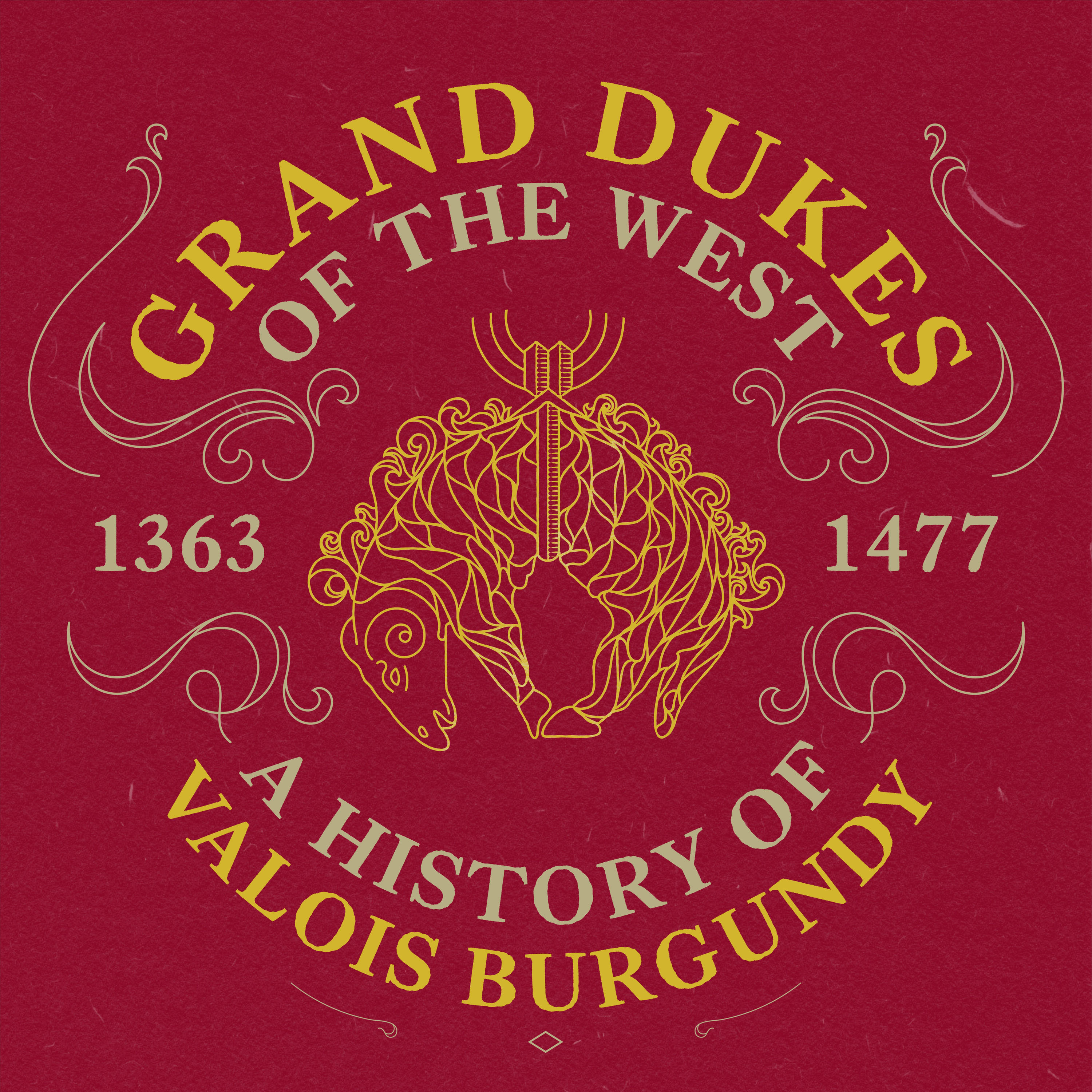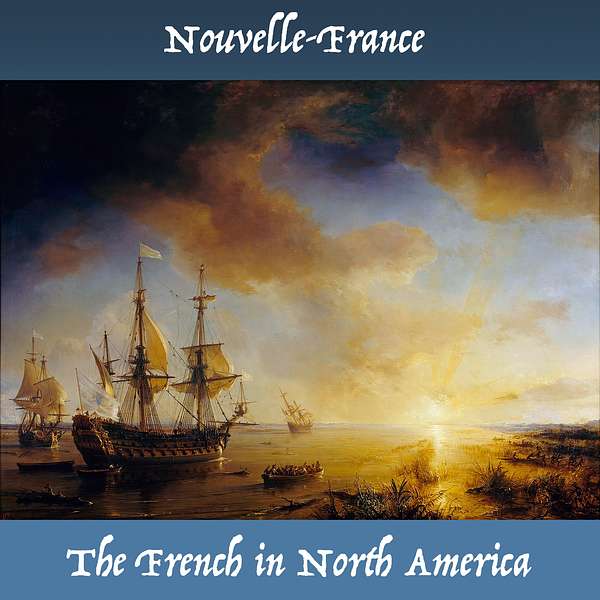
La Fayette, We Are Here!
La Fayette, We Are Here!
Nouvelle-France, the French in North America
The Nouvelle France (New France) is the French colonization of North America. And by this I mean North America, not just Canada. Over a couple of centuries, the French established settlements all over North America, especially along the St-Lawrence and Mississippi River but also in Nova Scotia, Florida, Louisiana and more.
New France basically existed from the first adventures of Jacques Cartier in 1534 to the end of the Seven Years' War in 1763 and the signature of the treaty of Paris, that saw France lose most of its American possessions. It is a remarkable, violent, tragic and perennial story. Embark with me on this grand adventure!
Timecodes:
Introduction
06:03 - Adventure and Discovery in America
13:27 - The First French Settlers
21:09 - Expansion Along the Rivers
26:53 - War and Peace
35:25 - New France Peaks
44:07 - New France Dies
53:26 - The Following Years
57:42 - Conclusion
Music: Marche pour la cérémonie des Turcs, composed by Jean-Baptiste Lully, arranged and performed by Jérôme Arfouche.
Artwork: L'expédition de Cavelier de la Salle pour la Louisiane, 1684, by Théodore Gudin (1844). (Grand Palais, Château de Versailles).
Reach out, support the show and give me feedback!
I once took a trip to Fort Ticonderoga, upstate New York. There, I visited the Fort protecting the Lake Champlain. It was originally named Fort Carillon and still has canons brought over by the French with the inscription ultima ratio regum or "the last argument of the kings", Louis XIV's motto for his artillery. A superb historical site, with knowledgeable and friendly staff.
On that occasion, they were dressed as French officers and soldiers from the Seven Years' War. They were showing us how the French organized themselves in the fort and repelled a superior British force in 1758. They also made a point in recognizing the French influence in the United States. One asked "does anyone in the audience know what Fort Duquesne is?" And a man answered "Yes, it's Pittsburgh!". He then went on with a list of French forts and settlements that are now American towns and cities.
From the first voyage of Jacques Cartier in 1534, to the Treaty of Paris of 1763, the story of the Nouvelle France is remarkable, violent, tragic and perennial. Embark with me on this grand adventure!
Welcome to "La Fayette, We are Here!", the French history podcast for the American public, by a Frenchman! I am your host, Emmanuel Dubois, and today we are talking about New France, la Nouvelle France, the French colonization of North America. Before we get started, I think we need to establish a few parameters as to what New France really was to give you, my dear listeners, a framework to better understand the current episode.
As we'll see in detail in a few moments, New France is the French colonization of North America. And by this I mean North America, not just Canada. In modern times, we tend to make New France synonymous with modern Eastern Canada, but that is wrong. While it is true that the main colony was in the current Province of Québec in Canada, the French established settlements all over North America, especially along the Mississippi River. They explored huge areas in the 1600 and 1700's, before any other European ever set foot there. The French went deep into what is now Michigan, Ohio, Kentucky, Illinois, Missouri, Arkansas, Alabama, Louisiana and more.
Many American cities take their origins in French forts or settlements. As mentioned, Fort Duquesnes became Pittsburgh; Fort Prud'Homme became Memphis, Tennessee. And you have many cities and towns that still bear French names, all over the country: Bâton-Rouge, Louisiana; Le Moyne, Alabama; Terre du Lac Missouri. All in all, dozens of rivers, lakes, cities and towns bear French names in the United States of America and Canada. I am presently recording this episode from Montréal, which literally means "Mount Royal".
New France basically existed from the first adventures of Jacques Cartier in 1534 to the end of the Seven Years' War in 1763 and the treaty of Paris, that saw France lose most of its American possessions.
Another important thing to underline here. New France is a story of courage and adventure, but also of colonization. The Native Americans, or the First Nations as we call them in Canada, were well established all over the continent and had been for thousands of years. The arrival of Europeans was a deep shock with grave consequences to this day. I'm not just talking about political supremacy or authority, but of cultural and physical extermination. I'm talking about wars and sometimes genocide. The French did trade a lot with the First Nations and actually established, I think, way better relations with them than the English or the Spaniards did, but the fact of the matter should not be forgotten. The Europeans, including the French, fought their way in America and took possession of massive parts of lands through force of arms, deception and sometimes commerce.
The French and the English efforts in North America were very different in nature. Whereas the French will send way less settlers but will establish forts and trading posts all over North America, the English took over the American Atlantic Coast and settled there in huge numbers, exploring a lot less territory. New France will also be structured as a mirror of the French Old Regime society, whereas the English colonies will have a more unique way of life. But I am getting ahead of myself. Before we talk about the differences between the French and English colonies, lets see how the French got there in the first place. To do this, we of course have to head back to France, the the Breton town of Saint-Malo.
Adventure and Discovery in America
Since the Europeans became aware of the existence of America after the travels of Christopher Columbus, all the kings and queens of the Continent wanted their share of the unexploited riches of that New World. That meant two things. First, only the major powers could afford to fund such expensive expeditions, limiting the discovery America to Spain, France, Portugal and England. The second is that if any native population stood in the way of European colonization or exploitation, they'd have to be dealt with, swiftly in most cases. On that subject, I recommend reading articles or listening to podcasts on the Valladolid Debate, were Spaniards actually discussed the humanity of the native South Americans. To get a romanticized version, read La Controverse de Valladolid by Jean-Claude Carrière, published in 1992, or watch the movie of the same with Jean-Pierre Marielle, Jean-Louis Trintignant and Jean Carmet. I highly recommend both.
At the turn of the sixteen century, France was very rich and powerful. More united than ever thanks to her victory in 1453 against England, the French monarchy was striving to become the major economic and military power in Western Europe, just like it had been in the times of Philippe the Fair in the 13th and 14th centuries. King François I, who was the subject of our last episode, certainly worked towards that goal.
The French were already exploiting the cod-rich waters off Newfoundland in the 1520s and 1530's and were becoming more and more interested in the northern part of the American continent, the south part being actively exploited and explored by the Spaniards and Portuguese. The French financed a first important effort in 1524, when the Italian sailor Giovanni da Verrazano explores the American coast from the Gulf of Maine to Cape Fear. Ten years later, a French sailor who already explored this part of the Atlantic is presented to the king by the bishop of Saint-Malo, Jean Le Veneur, with the idea of exploring undiscovered lands in this new world. The sailor's name is Jacques Cartier.
Hoping to find a passage to China or a land full of riches, François I supports an expedition led by Cartier in 1534, financing two ships and a little over sixty men. He explores the Gulf of the Saint-Lawrence and in July, he meets people from the Micmac Nation, the first contact between French and Native Americans. They quickly start to trade and exchange information. On July 24th, Cartier lands in Gaspé and installs a 30 feet tall cross. He then proclaims this territory to be property of the king of France. New France is officially born in that moment, even if no French actually stay in America at that point. Cartier also meets the Saint-Lawrence Iroquoians, two of whom will go back to France with the sailors.
Cartier sets up a bigger expedition, with three boats and helped by the two natives who just spent months with the French. Better equipped, with guides and a better knowledge of the region, the explorer and his king have high hopes for this voyage. Cartier goes down the river, he also gives it its name, the Saint-Lawrence, having entered it on August 10th 1535, day of the feast of Saint Lawrence of Rome. He keeps going, to the Ile d'Orléans, and up the river to an island. He finds am Iroquoian village named Hochelaga and names the island Mount Royal, because of its mountain in the middle. He also baptizes the whole country Canada, from the word kanata which means "village" or "settlement" in Iroquoian. The French spend their first Canadian winter that year and suffer terribly. Aided by the Iroquians, they survive and prepare to leave in the Spring of 1536. Cartier heads back to France, but forces the Iroquoian leader Donnacona to accompany him. Donnacona will die in France in 1539, never to see his homeland again. It is the first time the French use force agains the First Nations, it won't be the last.
Before dying, Donnacona tells the French about a Kingdom of Saguenay, a legendary rich land with cities made of gold. This convinces François I to finance a third expedition, even though the last one was very costly in both money and human lives. In 1541, Cartier heads back to America, accompanied by Jean-François de La Rocque de Roberval, who is actually in charge. Roberval is a soldier and is trusted by the king to establish a colony. Cartier arrives first and establishes the fort of Charlesbourg-Royal, near the current Québec City and works on establishing a trade network with the locals. Roberval will only leave La Rochelle in April 1542, while Cartier had to spend the Winter in Canada. Cartier leaves to head back to France and actually meets Roberval in Newfoundland. The latter tells him to head back West, to work on establishing the colony. Cartier refuses and sneaks out at night with his crew to go back home. His hull is full of what he believes to be gold and diamonds traded with the natives. Once in France, he discovers that it is only quartz and pyrite, with no real value. His expedition is a disaster. Roberval tries to explore some more but doesn't do much. He later receives news from his king. France is at war and he is recalled. He leaves Canada and the first French efforts in North America are basically a failure.
Nevertheless, contact had been established and information gathered. The conflicts in Europe and the Wars of Religion in France will force the French crown to pause its missions to the New World for a couple of decades. But at the end of the 16th century and at the beginning of the 17th, the French will come back. And this time, they'll come back to stay.
The First French Settlers
During the following decades, French fishermen keep heading West to take advantage of the huge schools of cod. Some of them start trading with the First Nations. At he same time, another commodity starts to be very much sought after in Europe and the object of a growing commerce: furs. The fur trade in Canada is one of the key factors to explain the reborn French interest in the nation. It will be very profitable for over two centuries and will favour settlements, exploration and growing exchanges with the First Nations.
The period between 1542 and 1608 is one marked by timid efforts. The French, busy at home, only send a few ships all the way to Canada. They do establish trading posts and try their hand at colonization. The French do settle in Florida, led by the Huguenot, meaning French protestant, captain Jean Ribault. They are however attacked and killed by the Spaniards in 1565. There is still a monument to his memory at the Fort Caroline site in Duval County.
The French establish a colony at Sable Island, around 300km from Nova Scotia, in 1598. The conditions are horrible and most colonists die in a couple years, the survivors being brought back to France. Between 1600 and 1604, other trading posts are established in Tadoussac and elsewhere in modern Québec and Nova Scotia. A settlement is established there named Port-Royal. Its founder is Pierre du Gua de Monts, another Huguenot. He is accompanied by an cartographer and explorer who has been visiting Canada some time at this point: Samuel de Champlain. He will play a very important role in the development of New France in the coming years.
Champlain understood from the get-go that if France was to achieve anything in America, she needed the goodwill of the local people. The country was vast, unknown and the winter conditions horrible. To be able to settle there, the French would need to keep trading and to establish alliances with the various Nations already present in North America. At the same time, the French authorities were interested in sending priests to convert the locals to catholicism. Huguenot commanders and catholic proselytism, talk about a strange mix. Typical of the period in France and Europe in general.
The French installations in Nova Scotia were good starts, but they needed to get deeper in the territory. In 1608, Du Gua de Monts charges Champlain with establishing a new trading post. The French are facing competition on the Atlantic coast, with the English and the Dutch establishing their own settlements. But nobody is really trying to go up the Saint-Lawrence river. Champlain is convinced of this and Du Gua de Monts agrees. The deeper the French go in Canada, the better the trading will be with the First Nations, and the more protected they will be from their European enemies.
In 1603, Champlain had spotted the perfect spot on the Saint-Lawrence river. On July 3rd 1608, he establishes the "Settlement of Québec". By this act, and by its continuation, he creates what we all know as French Canada. He is credited as the father of the colony because of this. However, Du Gua de Monts should get more credit, as he was Champlain's boss and actually funded the expedition. But he was a Huguenot, whereas Champlain was a Catholic. It was more suitable for the French to claim that Champlain achieved this. But in truth, they achieved it together.
The first times were very, very rough. The Canadian winters were unforgiving and many French settlers died of cold or scurvy. The French nevertheless stayed and kept at it. They established partnerships with the Huron or Wendat and the Algonquin. They also vowed to help them in their conflicts against the Iroquois or Haudenosaunee. The game of alliances between European and Indigenous Americans had begun.
In the Innu language, Québec means "where the river narrows", and it is exactly that. Québec is the perfect spot for a settlement. It commands the passage of the river and is easy to defend. Plus, it looks absolutely gorgeous. I really encourage you to visit Quebec City, the only fortified town in America. But I digress.
The French and their native allies did fight some wars together, enduring hardship and losses, but also establishing trust and even friendship. Some Wendat or Algonquin went to live with the French, and some French went to live with them. The mix of people and cultures proved important and successful. It still matters a lot to this day in modern Québec. During the following years, Champlain tries to balance French expansion, trade and political alliances. He doesn't want to get drag in major wars with the Iroquois but he also doesn't want to disappoint his allies. He also has to please the French crown who wants to gain riches, power and prestige through his efforts. It is a difficult system for everyone involved.
Trading in this part of the world was made through companies. The French crown would give a monopoly to a company for a period of time to trade some goods in a certain area. Du Guas de Monts's company had held such a monopoly for a time but it had been revoked in 1609. In 1612, the prince de Condé is put at the head of a new company by the French crown, the Compagnie du Canada. It has the monopoly of commerce and it keeps Champlain as director in a sense.
Champlain hoped to convince French merchants to send colonists over in exchange for the promise of good trading opportunities, but it did not become a reality. By 1627, only around a hundred Frenchmen and women were living in Québec. Despite Champlain's efforts, it was still only a glorified trading post. However, some French families were starting to have children in Canada and they were learning how to cultivate this foreign land. All was not lost and the next few decades would prove crucial.
Expansion Along the Rivers
The colony was completely dependant on France for its survival. Without supplies coming from the homeland, it would die. Luckily for the settlers, France has had a change of leadership, one that understands their needs better. In 1617, king Louis XIII effectively takes power, after having been crowned in 1610 at the age of nine. Since 1624, his principal minister is Armand Jean du Plessis de Richelieu, better known as the Cardinal de Richelieu. Together, they will breathe new life into the colony. Right now, I will focus on their impact on New France, but I am planning to release an episode on both of them next month, so stay tuned, dear listeners.
Richelieu recognized that the French fleet was too weak to counter the Protestant countries and therefore initiated a program to build a modern, versatile and strong fleet. This would allow the French to better defend their interests abroad and to increase their presence in the world. With that in mind, Richelieu aimed at making New France more than just a collection of forts and counters. He wanted a real colony, with thousands of French settlers who would start an actual society there.
The first major step in that direction was the creation of the "Compagnie des Cent Associés", or "Company of One Hundred Associates", also know as the "Company of New France". With an important capital of 300,000 French Livres, the company had the monopoly on settlement and exploitation over the whole of New France. Richelieu hoped to bring 3000 to 4000 settlers in a few years and to increase the fur trade dramatically. He was joined in this effort by Champlain and by the "Surintendant des Finances", or Finances minister, the Marquis d'Effiat. The French settlers had to be catholics and there was an increased effort made to convert the Natives to catholicism. Richelieu was a cardinal, lets not forget it, and he was fighting Protestant powers, most notably England. All in all, this policy makes perfect sense in the French foreign affairs of the time.
The first few years of this adventure were almost catastrophic. The French and English were at war yet again, and the corsair Sir David Kirk, working for the English sovereign Charles I, intercepted the French ships brining settlers in 1628. He then proceeded to take Québec, forcing Champlain to surrender to him. It was given back in 1632 with the Treaty of Saint-Germain-en-Laye. In 1633, 200 colonists reached Québec, a far cry from the hoped 3000. But the movement was initiated and the French tenacious. They kept sending settlers and created counters and forts along the Saint-Lawrence.
Over the next decade, French missionaries, especially Jesuits, led the colonization efforts. Priests like Jean de Brébeuf were trying to convert the Natives to Catholicism, make them embrace the European sedentary way of life and to increase the French presence in America. Because of the very difficult living conditions, especially the gruelling Winters, the French had no choice but to learn a lot from their Native counterparts.
I do think that this element played a key role in the relations between the French and the First Nations. While they were far from perfect, they were more peaceful and productive than those between the Native peoples and the English or the Spaniards. I think the French and the Natives found a certain communion of spirits by having to deal with the elements and it made them ignore or forget many of their differences. There was also a lot of cultural and people exchanges during the whole period. Many French went to live with First Nation peoples and vice versa. There was also a lot of interbreeding, the famous métis. While it also happened in the English colony, it was not as common and certainly not as well accepted.
The 1630's and 1640's mark am important increase of the French presence on the Saint-Lawrence. The Jesuits created their own companies, notably the "Compagnie du Saint-Sacrement". The town of Trois-Rivières was created in 1634 but they didn't stop there. They wanted to settle on the island of Montréal and in 1642, the town of Ville-Marie was created by Paul Chomedey de Maisonneuve, a French officer, and by Jeanne Mance, a French nurse. She was a remarkable woman, working relentlessly to heal and help the settlers and locals. She established the Hospital Hotel-Dieu and played an important role in the expansion and survival of the French settlement there until her death in 1673.
However, as his so often the case, the development of human civilization would be determined not by the available resources or the climate, but by war.
War and Peace
As I mentioned before, the French made alliances with some First Nations upon their arrival in the 16th century. They renewed these in the 17th but it also meant that they would have to face the same enemies as their allies. The French had alliances and trade partnerships with the Hurons, Montagnais, Micmacs, Algonquins and others. However, these nations all shared a common enemy: the Iroquois. They were not, as they were often depicted, bloodthirsty Indians who wanted to kill the French settlers no matter what. They had conflicts and issues with other First Nations and with the French and it sometimes led to war, sometimes to deals or periods of détente.
Nevertheless, the 1640s and 50's were marked by the Iroquois taking over the Huron territories. An important part of the Huron population was either eliminated through war or illness, or assimilated by the Iroquois. The French were losing their biggest allies in the region. That meant less and less trade, less and less money, and more and more hardships for the French settlers. The French would have to make a deal with the Iroquois and they certainly tried, but it wouldn't be totally achieved until 1701 and the Great Peace of Montréal.
The loss of their allies forced the French to do two things. The first, was to explore deeper in the continent, to find other peoples to trade with and to maybe discover other riches. They walked thousands of miles, exploring lands were no other Europeans had been, or would go for a century for that matter. The second was to force them to review their policy. With thousands of Hurons and others providing them with furs and arms to work, they didn't need that many Frenchmen and women to run an economically viable colony. Without them, they needed more settlers and resources from France. In 1663, there were about 3,000 French settlers in Canada, a good step up from the hundred or so forty years prior, but still not enough. But change was coming. France's new king was now a grown man and ruling over his kingdom. Soon, the warm rays of the Sun King would touch and transform New France and America forever.
King Louis XIV is probably the best known French monarch. I encourage you to listen to my July 2022 episode to learn more about him. For today, we will concentrate on his intervention in New France, advised and helped by his minister Jean Baptiste Colbert. These two men were the new French dynamic duo, after the likes of Louis XIII and Richelieu. Under them, two things will happen: Canada will become a royal province, not just a mere colony administer by companies, and the French will travel even further in America, finding more people, founding more forts and settlements. Also, they will create another French colony whose name you are probably familiar with: Louisiana.
So, in 1663, Louis XIV dissolves the Compagnie des Cent Associés and puts New France under royal authority, as a province. He installs a new form of local government, the "Conseil Souverain" or "Sovereign Council". It is headed by the governor, the intendant and the bishop of New France. This new structure was made to allow a better control of the colony and to expand its territory and influence, that latter task being the intendant's role. The first intendant is Jean Talon who arrives in 1665, bringing lots of energy and goodwill in the enterprise. The king did not send him alone, over 1,200 soldiers from the regiment of Carignan-Salière also arrive in Canada. Their mission is to take the fight to the locals who oppose the French, rather than just defending the settlements against them.
It works. The colony expands greatly over the following years and many First Nation peoples come to term with the French, sometimes becoming allies. However, this came after many campaigns, some involving the destruction of First Nation villages and other atrocities. As I said, the French might have been gentler than the English or Spaniards, but they are also guilty of many crimes in America.
Minister Colbert was happy with Talon's results and kept sending funds his way to further develop the colony.
The colony was sorely lacking in a major way: women. Most settlers had been men and there was a huge discrepancy between both sexes. To remedy that, Louis had over 800 women sent to New France from 1663 to 1673. They are the famous Filles du roi, the King's Daughters. They were young, educated and dowry provided by the king. Their purpose was to boost the population, to help moral and to make New France more enticing to future settlers. They also brought with them a much needed balance in the society and New France only really began to thrive after their arrival.
As I said earlier, King Louis and Minister Colbert's intervention also favoured exploration. In 1672, Louis Jolliet, a businessman born in New France and the Jesuit priest Jacques Marquette started exploring the Mississippi river, an area mostly unknown to Europeans at the time. Intendant Jean Talon and governor Louis de Buade de Frontenac wanted to find more about this area and maybe concluded new alliances and trade agreements.
They were followed by the famous René-Robert Cavelier de La Salle, a Norman explorer. He came to New France as a young man with a firm desire: to find a passage to China. He was so obsessed with it that the locals made fun of him and nicknamed his lands "La Chine" meaning "China". The town of Lachine on Montreal's Island still bears this name. But de la Salle was not an idiot, he new that he'd need to mount a cohesive expedition to find out more about this huge land. He spends the 1670's establish forts on various key points and making exchanges with Native peoples. In that respect, he was following the lead of the Coureurs des bois, these Frenchmen of adventures who would venture deep in unknown territory to find people and riches.
Supported by the king, he launches many expeditions from 1679 onward. In 1682, he finds the mouth of the river Mississippi and proclaims that this whole area to be possession of the French king under the name "Louisiane" or "Louisiana". He will come back and explore more until being killed by his own men in 1687, following a disastrous expedition. Nevertheless, he had initiated a new wave of French colonialism in the centre and south of North America. If you now have New Orleans, Baton Rouge and many other French names in this area as well as in the MidWest, it is in great part thanks to de La Salle. But now, lets get back up north, along the Saint-Lawrence river.
New France Peaks
Over the years, the French built a complex and remarkable society in North America, especially along the Saint-Lawrence river, between Montréal and Québec City. Jean-Talon and Frontenac believed that for New France to thrive, it needed a strong core. Those towns were the keys of that core. However, the 1690's saw a renewal of conflicts with the First Nations, especially with the Iroquois. Finding ways of peace was necessary if New France was to survive and expand.
Let me just clarify the geographical names here. New France was a huge territory and was divided as such. Canada was roughly modern Québec. Acadie was New Brunswick and parts of Nova Scotia. The Pays d'en Haut, or Upper Country, was what is now Ontario and parts of Manitoba. Terre-Neuve is now Newfoundland. Louisiana covered an even bigger territory from the Great Lakes to the Gulf of Mexico, although the French presence was not as strong as in Canada. Its forts, counters and towns mostly followed the Mississippi and the rest of the territory was recognized as French by other Europeans, not so much by the First Nations.
All this made a whole that we call Nouvelle France. And at the turn of the 18th century it was huge, rich and expanding. In 1701, governor Louis-Hector de Callière signed a peace treaty with 39 native nations on a document known as the Treaty of the Great Peace of Montreal. It allowed a normalization of the Franco-native relations for the following decades and allowed the French to focus on more than just defending their towns. Shortly after this, Antoine de la Mothe, sieur de Cadillac, a French explorer, took advantage of the new peace to establish Fort Pontchartrain du Détroit, now the city of Detroit, Michigan.
The French lived in a society organized in what they called seigneuries, a system akin to manorialism. Basically it meant that the territory was divided in chops of lands headed by a seigneur or lord if you will. It was very similar to medieval France. The local lord had a very strong authority, even on matters of justice. Even though the governor was ruling over the colony, the local lords were in fact establishing how to exploit and rule the land. However, given the circumstance, great distances and low population density, the French living in New France usually enjoyed more freedom than their counterparts living in France. Absolutism had trouble reaching beyond the Atlantic.
At the death of Louis XIV in 1715, New France was bigger, stronger and richer than ever. It dwarfed other colonies in North America in sheer size and was bringing riches and prestige to the métropole. But the golden days were almost at an end. If the settlers, explorers, merchants and navigators managed to explore the land and make peace with the First Nations, they couldn't do anything about a single reality. France was a key player in the European game of absolute power and she was about to experience some terrible defeats during the next matches. In particular, another player was about to increase the pressure and to take great advantage of the French losses: Great Britain.
The first blow actually comes just before the Sun King's passing. France had been at war with Prussia, Great Britain and other European powers in the War of the Spanish Succession. Following more than a decade of combat, France and Great Britain sign a peace treaty at Utrecht, in the Netherlands. It's a compromise. Great Britain concedes some points in Europe but France has to transfer to the British crown several of her North American possessions, namely Newfoundland, Acadia (save for Cape Breton Island), and Hudson's Bay. The French fortified town of Louisbourg, established on Cape Breton will be a torn in the British side for the next couple of decades and will be fought over repeatedly. By the way, you can still visit it as it was partially restored to it's French regime looks. I've made the trip myself and I highly recommend it.
Let me talk a bit about Louisiana. As I mentioned, it is an absolutely huge territory and French control over it it is very loose. The crown does try to expand its control and to persuade investors to send capital and settlers in this, quote, "French Mexico". During the first fifteen years of the eighteenth century, the French work hard to establish working relationships with the First Peoples and are rather successful in this endeavour. They built forts and counters all over the country to defend it and to trade with the local Nations. They also support them when they attack the British, which happens rather regularly.
If New France was a settlement colony for almost a century by now, Louisiana was more of a colonie-comptoir or "exploitation colony". From 1717 onward, the focus shifted and it became more of a settlement colony but also the centre for slave trade in French North America. There were slaves in New France too, but a lot less than will eventually be sent to Louisiana in the Eighteenth century. I know I often present the British and Spaniards as France's adversaries and they were, but I don't want you to think than the French behaved a whole lot better than their European rivals. Just like them, the French brought diseases and war to the First People, although they did make a bigger effort to forge and maintain alliances as I said. And also, sadly, just like them, they engaged heavily in slavery.
The French possessions in the Antilles, notably Haiti, were built around slavery, and the French treated their slaves with the same brutality and lack of humanity as others slave owners around the world. Whatever the time period or the regime of the moment, there is simply no excuse for slavery. Nothing that was achieved by slavery couldn't have been by a work force treated humanely, with good conditions, and not beaten up and unrooted from their homes. In my eyes, and I say this as somebody trained as a historian, it is completely inexcusable, whatever the circumstances. France is as guilty as any other power of that horrendous crime and it should never be forgotten.
As for Louisiana, it was administered until 1731 by private enterprises, just like New France before 1663. It wasn't developing as fast and well as hoped and the French knew that the British would exploit any weakness in case of conflict. Governor Bienville, who was named in 1732, and his successors Vaudreuil and Kerlérec worked hard to reinforce the administration, improve alliances with the First Peoples and to block British expansion. The French built new forts, especially along the Mississippi to increase and facilitate trading with New France. By doing so, they also created a multi-ethnic and multilingual society where French caucasians, Black Africans and First Peoples mixed together for decades. These métis are not to be mistaken with the Cajuns who are actually descendants of the deported Acadians, but I will circle back to them.
New France Dies
Each passing year it became clearer that Britain was eyeing the French possessions in North America. By the 1740's, the British colonies were far more populated than the French ones, about 1,5 million souls versus 70,000, but they actually controlled way less land. It was however obvious that any major European conflict would have consequences in North America. Both the French and the British prepare themselves, but the French knew they were at a considerable disadvantage in terms of manpower. However, they had two key advantages: a better knowledge of the land and better relations with the First Peoples.
The first major conflict in that context is the War of the Austrian Succession. I'll spare you the details but what is relevant to us is as followed. As usual, France and Great Britain are on the opposite sides of a major European military conflict and it gets transposed in North America. The French army is quite successful in Europe and Britain tries to conquer parts of the French colony. The British seize Louisbourg in 1745 by sending an army from its colonies on the Atlantic coast. However, the French fleet and the Canadian resistance prevent them from exploiting that success. New France itself defends its borders and the Royale, the French navy, prevents the Royal Navy from undertaking any major action. In 1748, the peace treaty of Aix-la-Chapelle, or Aachen in German, is signed and Britain has to give Louisbourg back. In Europe, Prussia, who had been France's ally, conquered Silesia and just became a major military and political power. It'll play a key role later in our story.
At this juncture, France doesn't appear to be in such a bad position. But when you dig a little deeper, you realize that it was actually in a very bad way. Since the last wars of Louis XIV, her coffers were depleted and tax revenue barely kept the country afloat. France had the biggest army in Western Europe and huge fleet, which cost a fortune to maintain. Its financial system was less modern than Britain's and it was getting closer and closer to financial disaster. And on the geopolitical side of things, the War of the Austrian succession didn't solve anything. It did redistribute the cards for hegemonic power in Europe however, and the finale would be played in the next war, the biggest of all: the Seven Years' War.
This enormous conflict is a proto world war. It spans from 1756 to 1763 with battles on land and sea on three continents and three oceans. It will get its own dedicated episode later this year so I won't go too deep into the details here. What you need to know is that it opposes France and her ally of the moment Austria against Great Britain and its new ally Prussia. It's a titanic conflict, one that will be disastrous for France. The reasons for war are geopolitical. The Austrians are wary of losing Silesia to Prussia in 1748. The French and the British fight for influence and control over North American territory, including the very rich fisheries Off Newfoundland. After much local skirmishes and encounters, it grows into full-scale war in 1756.
Let me precise something. Many people think that the Seven Years' War and the French and Indian War are the same thing. This is wrong, or more precisely, an approximation. The French and Indian War, known in Québec as the War of Conquest, is a properly intercolonial conflict that starts in 1754. In 1756, it will get immersed in the broader War, but it is a conflict in its own. An important part of that war is the expulsion of the Acadians by the British that starts in 1755. Following French victories in Ohio and a growing pressure, the British decide to expel the French-speaking Acadians from Acadia, a territory that they control since 1713 and the Utrecht treaty. Over the next few years, they will expel over 12,000 of them in Canada, Newfoundland and Louisiana, where they will become known as the Cadiens or Cajuns. Over 8,000 of them will die in the horrible conditions of this massive deportation and it is considered a genocide.
The Seven Year's War does however starts rather well for the French. Despite their huge numerical disadvantage, the French defeat the British on different occasions in the first years of the conflict. A major victory is obtained at Fort Carillon, now fort Ticonderoga, where the Marquis de Montcalm defeats general Abercrombie in July 1758. But the tide will soon turn, both in North America and in Europe.
In 1759, the British manage to push back the French and decide to attack the hearth of the colony: Québec. The British had already try to take Québec in the past. The most famous attempt happened in 1690 when Sir William Phips sailed from Boston with 32 shops and 2,000 men to attack the French stronghold. Once there, he sent an envoy to governor Frontenac, asking for his surrender. Frontenac is laconic in his answer. Not waiting for the envoy to finish his plea he says quote: "Je ne vous ferai pas tant attendre. Non, je n'ai point de réponse à faire à votre général que par la bouche de mes canons et à coups de fusil; qu'il apprenne que ce n'est pas de la sorte qu'on envoie sommer un homme comme moi; qu'il fasse du mieux qu'il pourra de son côté, comme je ferai du mien." Or in English ""I will not keep you waiting much longer. No, I have no response to give to your general except through the mouths of my cannons and with rifle shots; let him learn that it is not in this manner that one sends a summons to a man like me; let him do his best on his side, as I will do on mine." In the ensuing battle, the French defeated the British, forcing Phips and his ships to sail back to Massachusetts.
The situation is however different in 1759. The British army has a new general, James Wolfe, and a much bigger force. He arrives in the Summer with 190 ships, 30,000 sailors and 9,000 troops. The French and their Native allies have around 15,000 men, many of them militia. The French inflict defeats and losses to the British during the whole of July. Wolfe responds in kind, burning villages and farms all over the region. He knows he has to take Québec before the Winter and grows desperate. The fortified city is remarkably well situated and defended, and a frontal assault would probably lead to disaster.
The outcome arrived on September 13th, 1759. It is a complicated battle, so let me just give you the broad-strokes. Wolfe offers battle to Montcalm. It is a mistake, as more French troops are on their way and could encircle the British. But Montcalm is impatient and too daring, he wants to defeat the British then and there. They meet on the Plains of Abraham. The French who hastily exited the city to form very rough ranks, charge the British in a disorderly manner. Montcalm is too much in a hurry, he commits mistakes. He leads the assault. He takes a bullet to the leg and another to the groin, he will die in pain the next day. Wolfe, on the other hand, is patient and maintains order. He stops the French assault and counters it with devastating fire. He is also mortally wounded, taking a bullet to the groin and another to the chest. He dies on the field of battle, knowing that he had achieve his mission. The battle was won and Québec would soon fall.
The Following Years
The rest of the story is more of the same. The French manage some victories here and there, including at the battle of Sainte-Foy, near Québec, in 1760, but the overall conflict in America is lost. The French had had the help of many First Nations, whereas the British allied themselves with the Iroquois Confederation. Let me name the Nations allied to French: Abénaquis, Algonquins, Hurons-Wendat, Montagnais, Micmacs, Lenapes, Ojibwés, Shawnees, Potawatomis and Népissingues. This gives you an idea of the network of alliances that the French had built over the past two centuries. However, it wasn't enough to stop the British from conquering New France.
By 1760, following the loss of Montréal, the war was effectively over in North America, but it was still raging in Europe and elsewhere. A French victory there might have allowed for a favourable peace and the restoration of her colonies, but that was not too be. The French armies are defeated by the Prussians in Germany, the French fleet is all but annihilated by the Royal Navy in a series of battles in the Atlantic. In 1763, France is utterly defeated, financially ruined and on the verge of collapse.
The Treaty of Paris of 1763 is a death sentence for New France. France loses Canada, Cape Breton, the Great Lakes, parts of the Mississippi, its Indian possessions and many Antilles islands to Great Britain. It also loses Louisiana Spain, who cedes Florida to Britain in turn. France manages to keep fishing rights off Newfoundland and the islands of Saint-Pierre-et-Miquelon. She also manages to keep sugar-rich islands like Guadeloupe and Saint-Domingue. Many Frenchmen, including the foreign minister Choiseul, consider this a diplomatic triumph, since sugar was a very sought after commodity.
Given the total military defeat of the French forces, this treaty is actually, at the time, a good arrangement for France. It does however marks the beginning of the rise of Great Britain as the world's leading power and damages French prestige enormously. It also damages the French finances even more, with effects that will be felt in 1789... but this is another story.
What is important here is that New France was no more. The British took over it and established their rule in the following years. They did allow the French to keep their language and religion, catholicism, and treat them relatively well. They also raised the taxes in America to pay for the war effort. This fair treatment of their former enemies and the increase taxation will be among the many grievance that will lead the rebellion of the British colonist and the American War of Independence, in which France will also play a key role, this time on the winners's side.
A small precision, you might wonder "what about the Louisiana purchase?". Well, in 1800 Spain signed a treaty with France, the treaty of San Ildefonso. It was an alliance treaty and part of Napoléon's dealings in Europe during the Consulate period. With this treaty, Louisiana was given back to France. In 1803, Napoléon needed money more than he needed thousands of square miles in America with no infrastructure to control them. He therefore sold the territory to the USA for 15 million dollars, about 400 million dollars in modern currency. It represents a little over 20% of the total size of the continental USA. At the time, it was logical and everybody was happy.
Conclusion
The story of the Nouvelle France is really quite fascinating. From the early explorers to the settlers, from the traders to the warriors, the French accomplished many things in North America in the sixteenth, seventeenth and eighteenth centuries. They proved ingenious, resourceful and tenacious. They also established more relationships with the First Nations than any other European power. They did it to serve their purpose of course, but they did it nonetheless. Sadly, they also engaged in wars, massacres and slavery. A fact that is often absent in history books about the French in America.
But the French also built something else, something long lasting: a cultural impact. The fait français en Amérique, the "French fact in America" is here to stay. Québec is the obvious example. It is the second most important Canadian province in population and economy and is a huge cultural exporter. You probably all know famous Québécois artists like Céline Dion, Denis Villeneuve or the Cirque du Soleil. Québec's cultural output is extraordinary given its population's size and never ceases to amaze me.
There are French speakers all over Canada. New Brunswick is a bilingual province and you have community in Nova Scotia, Ontario, Manitoba, Alberta and other provinces. Canada is officially bilingual, despite the French having been conquered 263 years ago. France lost control of her colony, but the French people living there remained true to their culture and language. To this day, they fight to preserve it, the last official representatives of the French language in America. The United States also have French speaking communities and many French-named towns, rivers and geographical sites, as I mentioned in my introduction.
French language and culture are here to stay in America. New France may be no more, but the North American French speakers, be they Québécois, Franco-Ontarians, Acadians, Métis or Cajuns, will keep going. And for all my English speaking friends and listeners, I say this: "apprenez un peu de français, ça fait du bien à l'âme". Learn some French, it's good for the soul. Au revoir !
Podcasts we love
Check out these other fine podcasts recommended by us, not an algorithm.

Generals and Napoleon
John W. Viscardo
Shipwrecks and Sea Dogs
Rich Napolitano
French Revolution & Napoleon (Grey History)
Grey History (William Clark)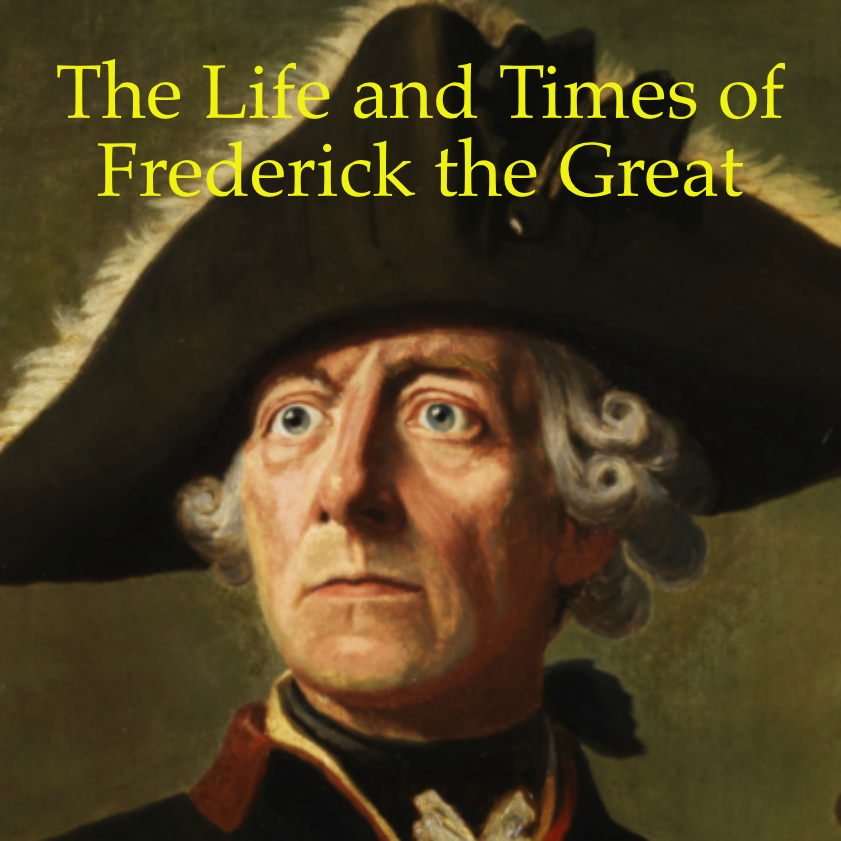
The Life and Times of Frederick the Great
Alec Avdakov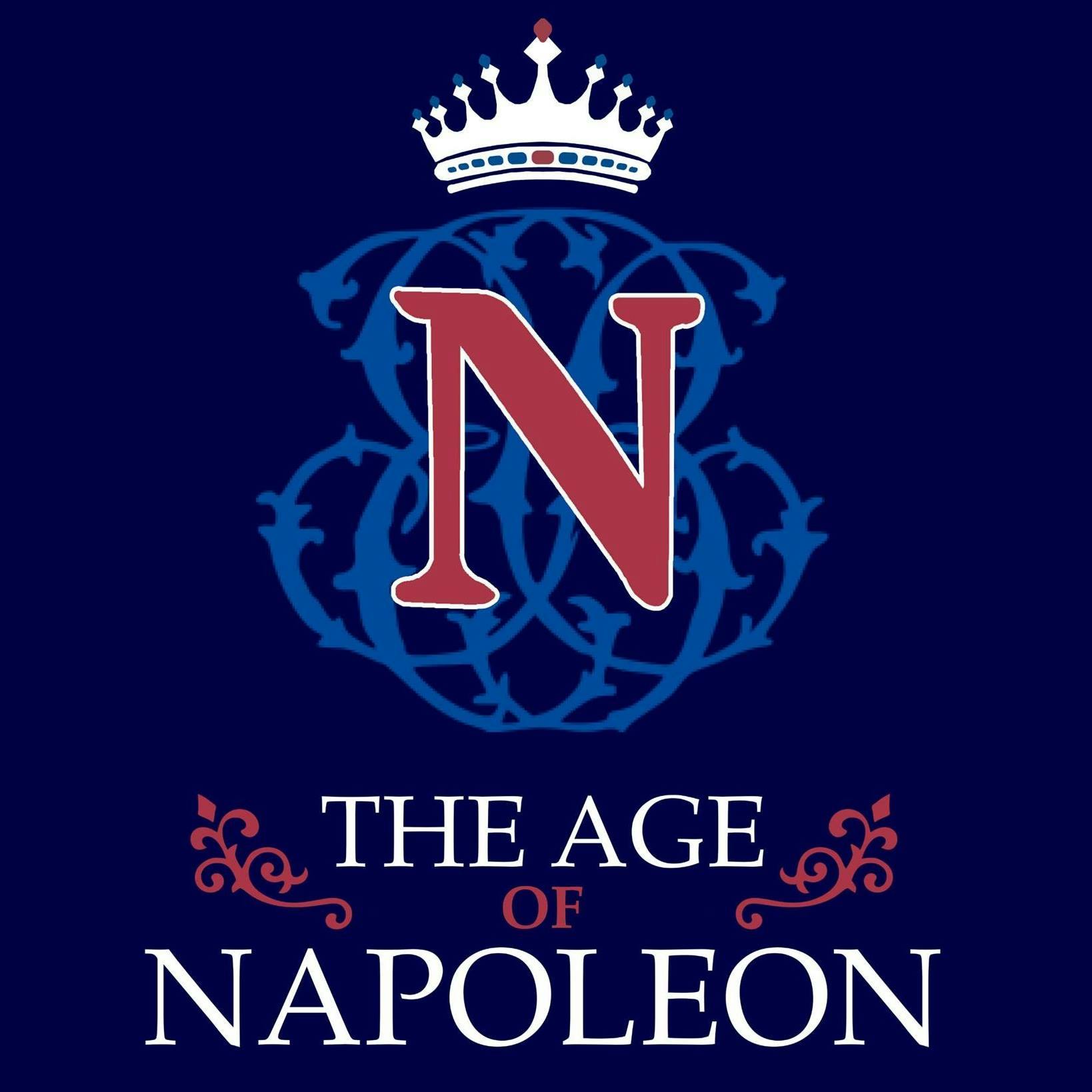
The Age of Napoleon Podcast
Everett Rummage
The Siècle History Podcast
Evergreen Podcasts
The Napoleonic Wars Podcast
Zack White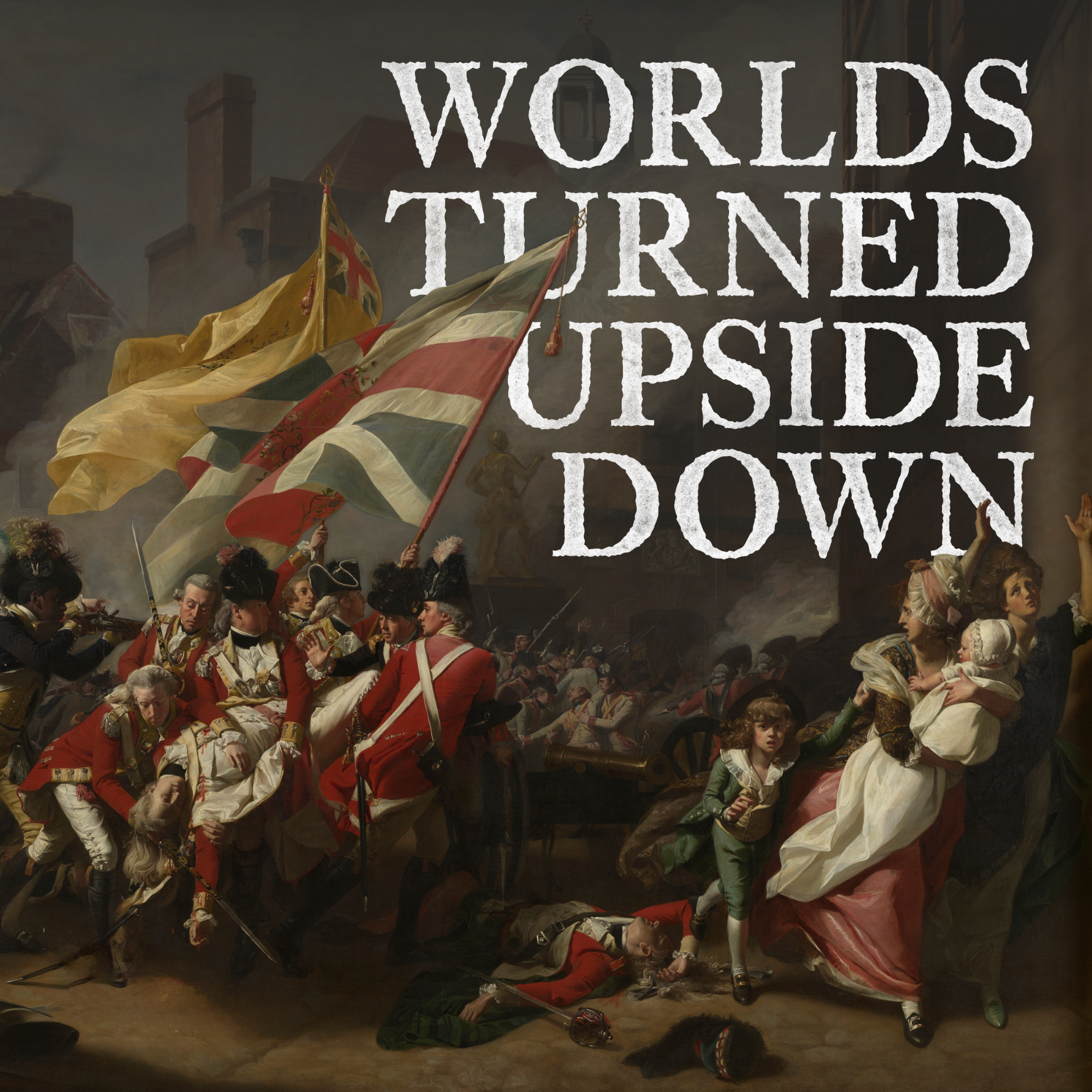
Worlds Turned Upside Down
Roy Rosenzweig Center for History and New Media
Empire-Builders
David Mainayar
Battles of the First World War Podcast
Mike Cunha
New York, Quebec, and The Water Route to the Center of the World
William Matthews
Deep into History
Deep into History
Battle Royale: French Monarchs
Ben Clarke and Eliza Sommers
A History of Japan
Justin Hebert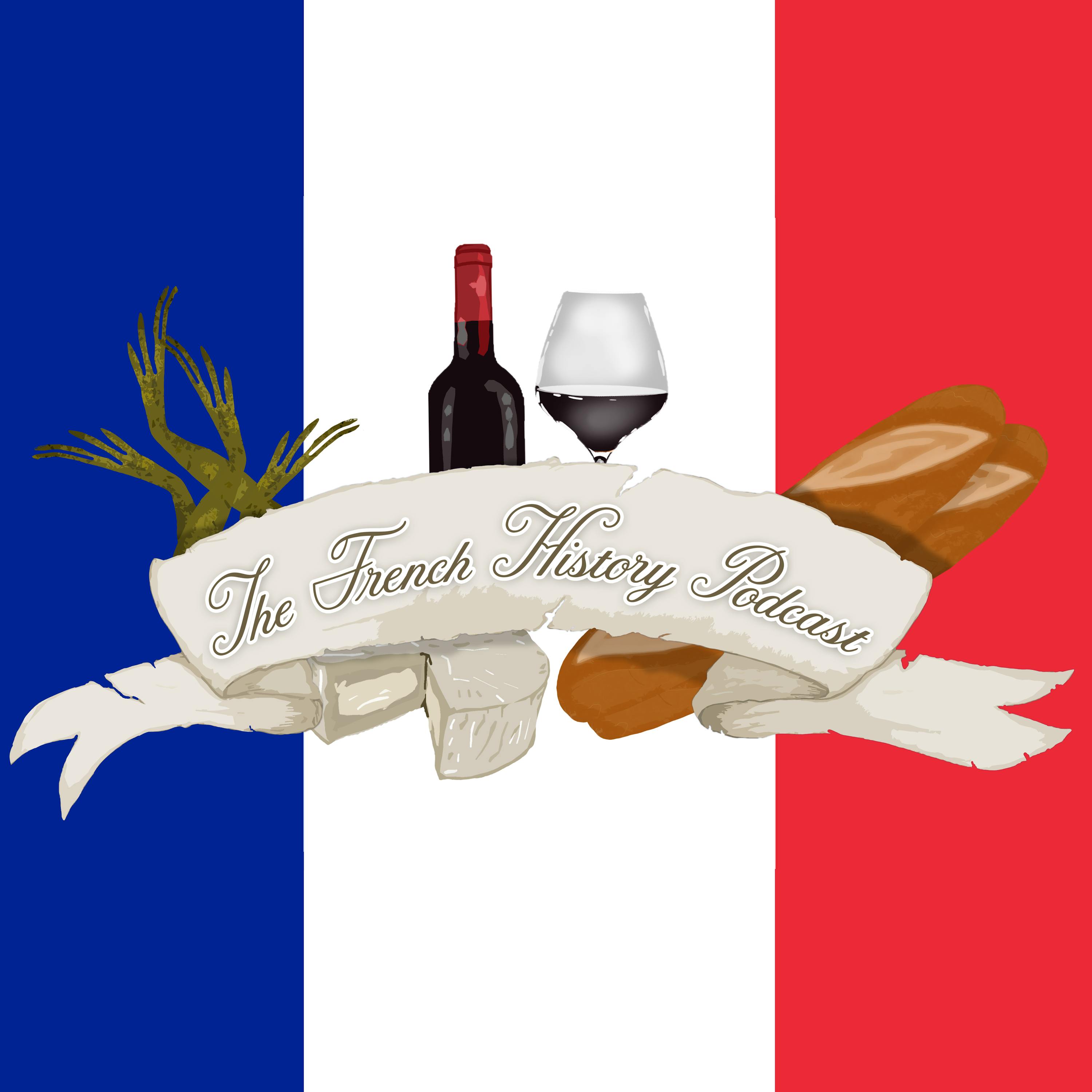
The French History Podcast
Evergreen Podcasts
History of the Germans
Dirk Hoffmann-Becking
Half-Arsed History
Riley KnightFrench-Canadian Legacy Podcast
French-Canadian Legacy Podcast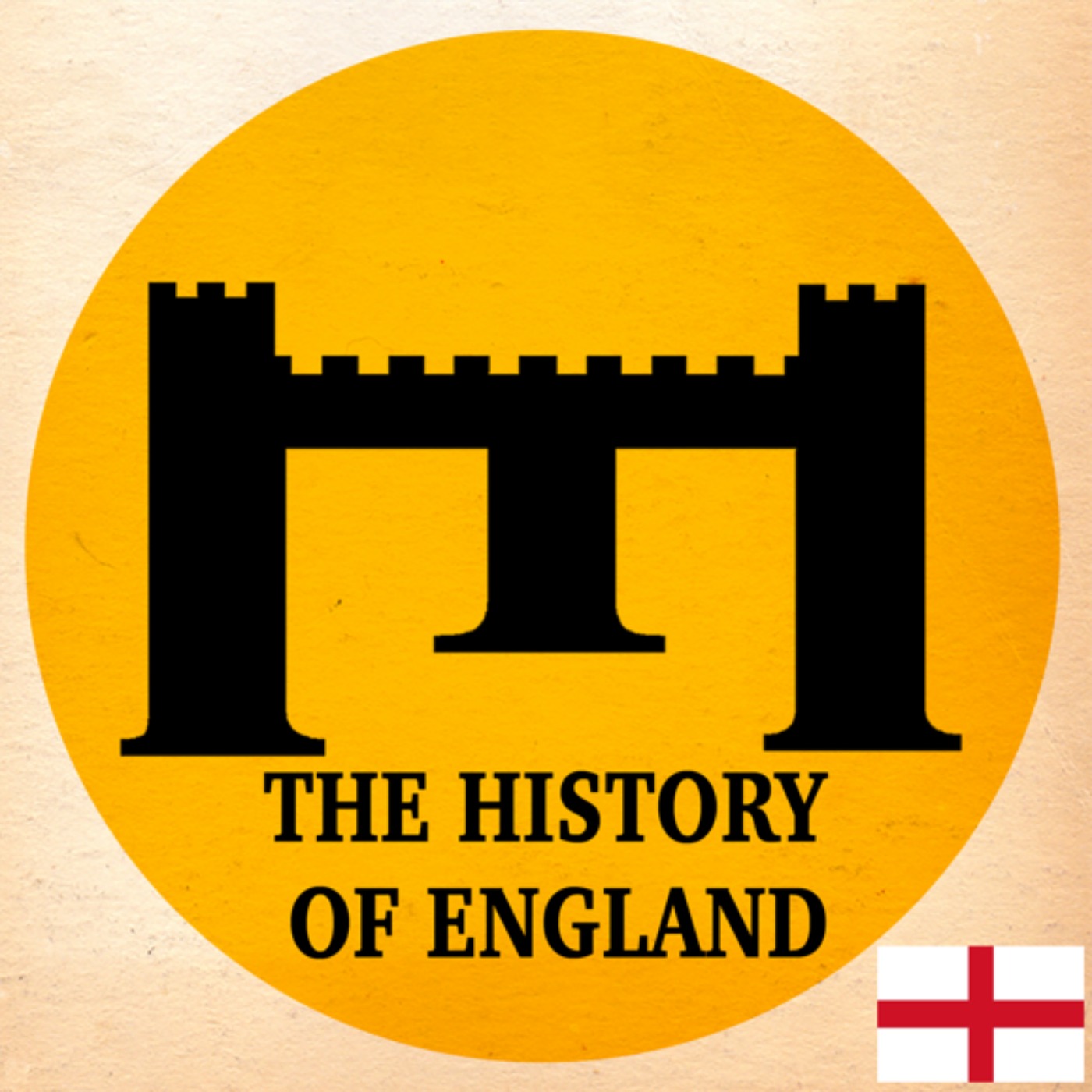
The History of England
David Crowther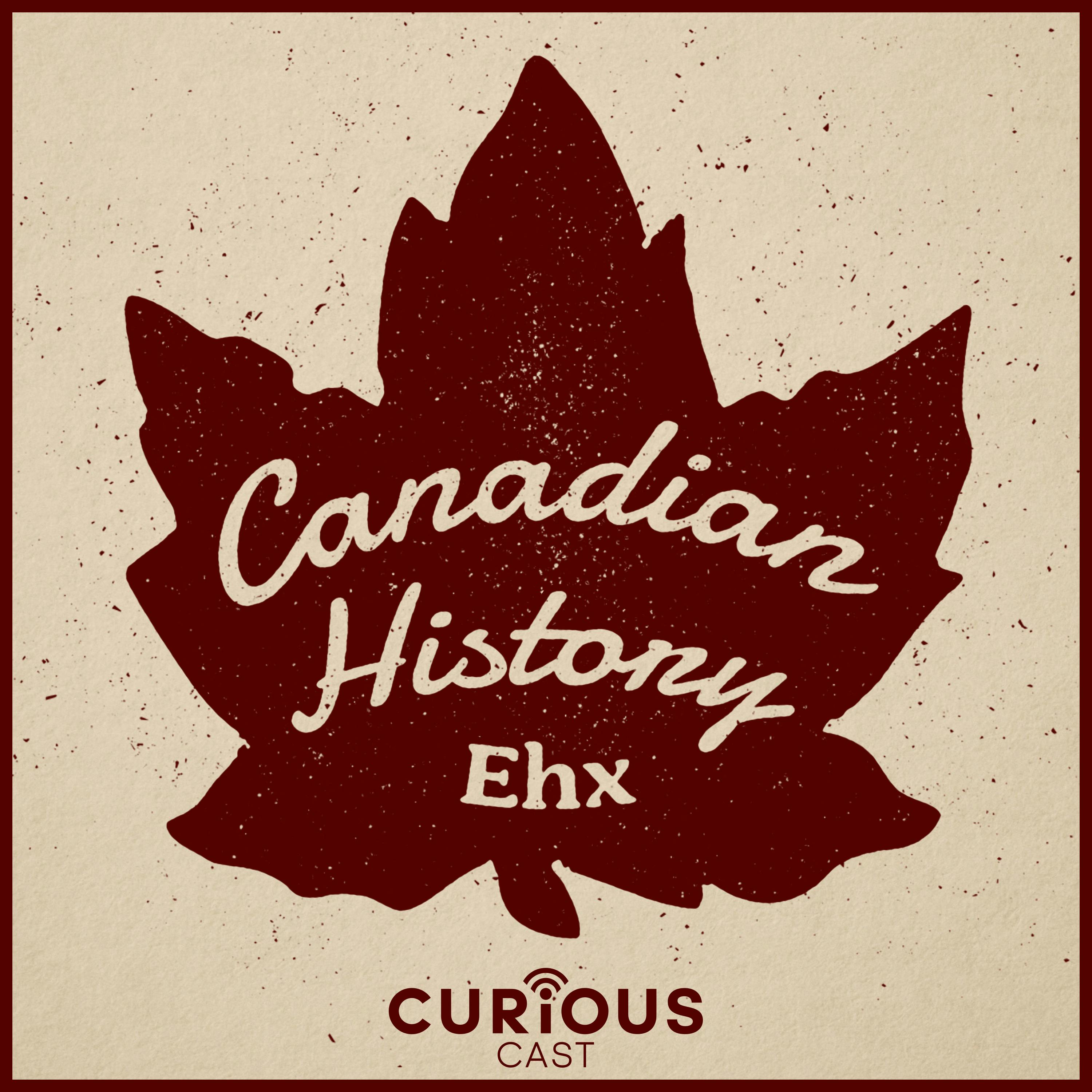
Canadian History Ehx
Craig Baird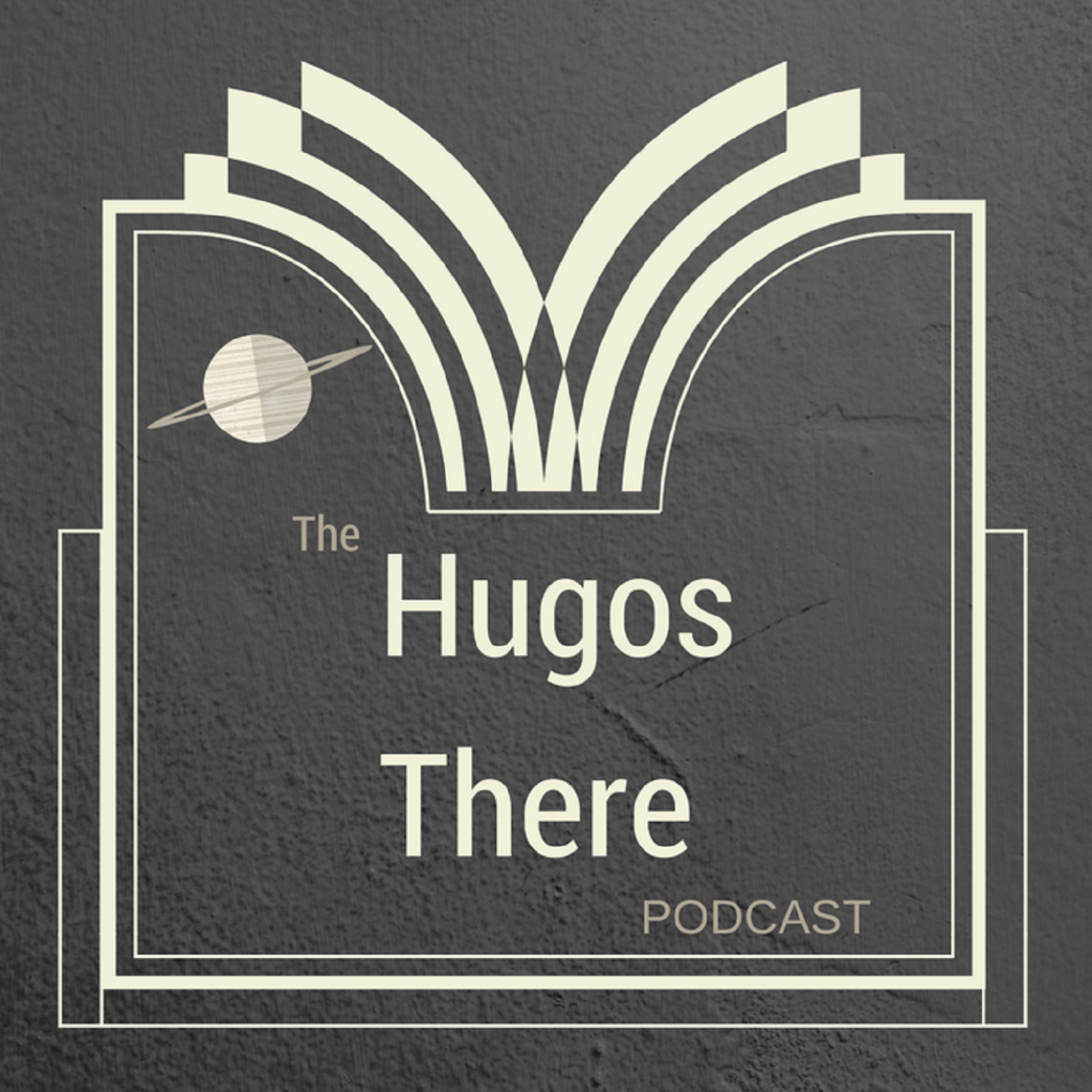
Hugos There Podcast
Hugos There Podcast
Hugo, Girl!
Hugo Girl

